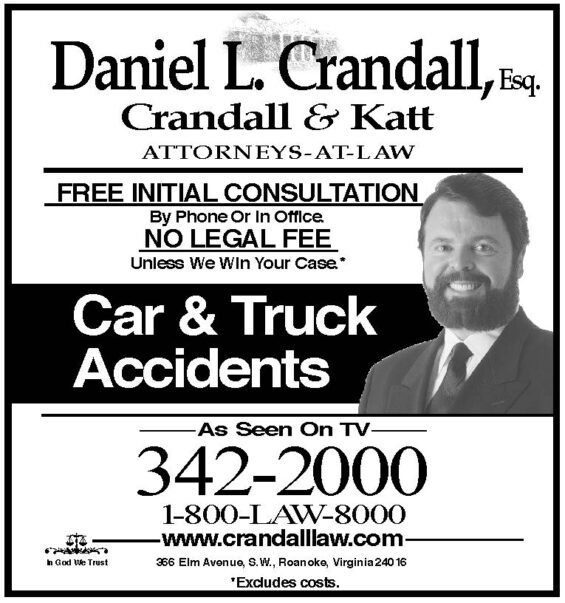Three prominent personalities recount stories of the area’s Black community

by S. Rotan Hale
The gentrification of Roanoke’s Gainsboro area is one of great concern and to this day continues to cause much consternation. For the thousands who lived it, many understand the proposed “redevelopment of an area” as “destruction of a community” instead.
Over the years, through all of the discussion and many articles written (some prize-winning) regarding the topic–all unfortunately reside as stories of the dismemberment of a thriving community.
In recognition of Black History, three notable area personalities were the main panelists invited to discuss issues surrounding the very stories of what would become one of the more infamous periods in Roanoke’s history.
Billed as “A Conversation with the Elders of Roanoke’s Black Community, from Yesterday to Today,” the affair was sponsored by and held Sunday, Feb. 10 at Christ Episcopal Church in downtown Roanoke.
During the well-handled session, moderators John Eure and Quentina Enoch posed questions to panelists: Rev. E. T. Burton, pastor emeritus Sweet Union Baptist Church; Rev. K. B. Wright, former pastor First Baptist Church, Gainsboro (FBC); and Claudia Whitworth, editor/publisher, The Roanoke Tribune.
Each of the three gave in-depth accounts of how they wound up in their respective positions here in the Roanoke valley.

Upon accepting my position I came into the situation where I found our neighborhoods being molested,” said Rev. Wright who came to the area from Elliston, VA, becoming pastor at FBC in 1973. Wright would go on to speak of the deplorable conditions brought on by the city’s “urban renewal: that he coined as “Negro removal.” He further defined the relations during that time between African-Americans and the Whites as “somewhat cordial.”

Whitworth is a Fayetteville, WV native, whose comments mostly centered around the demolition of The Roanoke Tribune office in the particular in 70’s –a business she bought from her father Rev. F. E. Alexander who founded the newspaper in 1939. Her experiences through the transition of the newspaper’s two locations in the Gainsboro area – #5 Gilmer Ave. and later on First St.–commonly referred to as “The Yard,” Whitworth recognizes her role as a victim of the community’s annihilation.
On a more positive note, she also spoke briefly about the exceptional quality of students–Lucy Addison High School graduates who were stellar products of the incredible teachers at the famed high school and at Christiansburg Institute (CI) from which she graduated.
“Mostly all of our teachers at CI came from the Roanoke Valley and they were excellent teachers,” said Whitworth. We had Connie Hamlar, who was a Johnson then, also Ruth Dupree and Ruth Claytor, etc., all great teachers.”
All three panelists at certain points addressed the issue of the city’s proposed “relocation” of Black businesses and homes. It was a venture that ultimately uprooted thousands of the community’s inhabitants, many of whom were left over their head in debt due to the purchase of properties outside of their means.

“Henry Street was the heart of Black business in the Roanoke area,” said Rev. Burton who mentioned some of the facilities as the Virginia Theatre, Brooks Pharmacy, two churches FBC, Gainsboro and High Street BC as well as doctors’ offices and much more.
“I could come down and get everything that I needed done in that area,” said Burton. “I’m thankful for Henry Street because it came on the scene at a time when it was needed and it did what it needed to do.
Though lasting 3 hours, the event left many in attendance who braved the cold rainy afternoon weather, captivated by the engaging and often uplifting dialogue by the panelists who also fielded a barrage of interesting questions.

This most engrossing program was primarily brought about by the suggestion of church vestry member. B. Ray Phanelson, who said the idea for the project came to him during a church meeting and he couldn’t sleep until it came to fruition.




